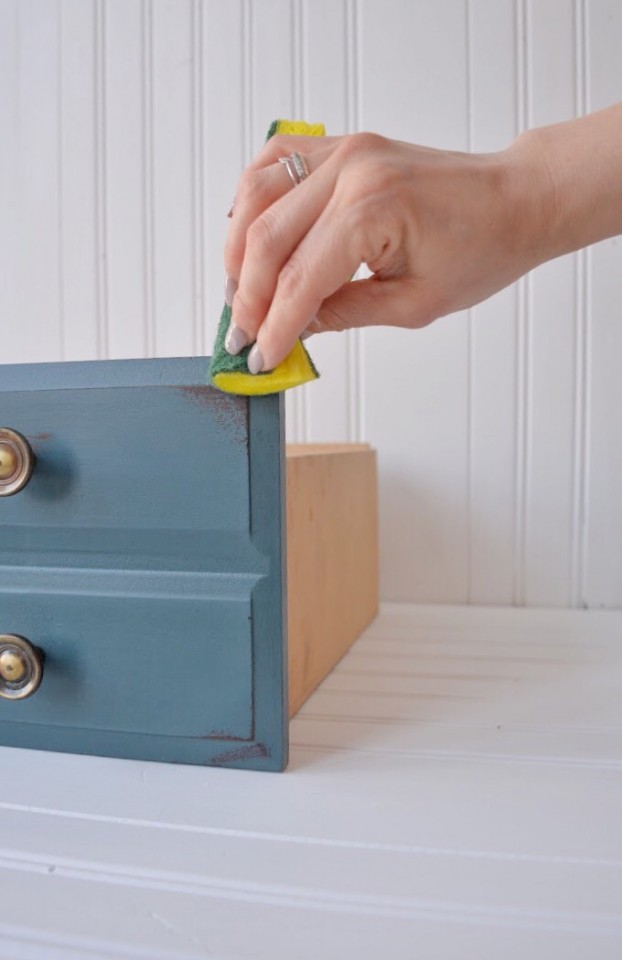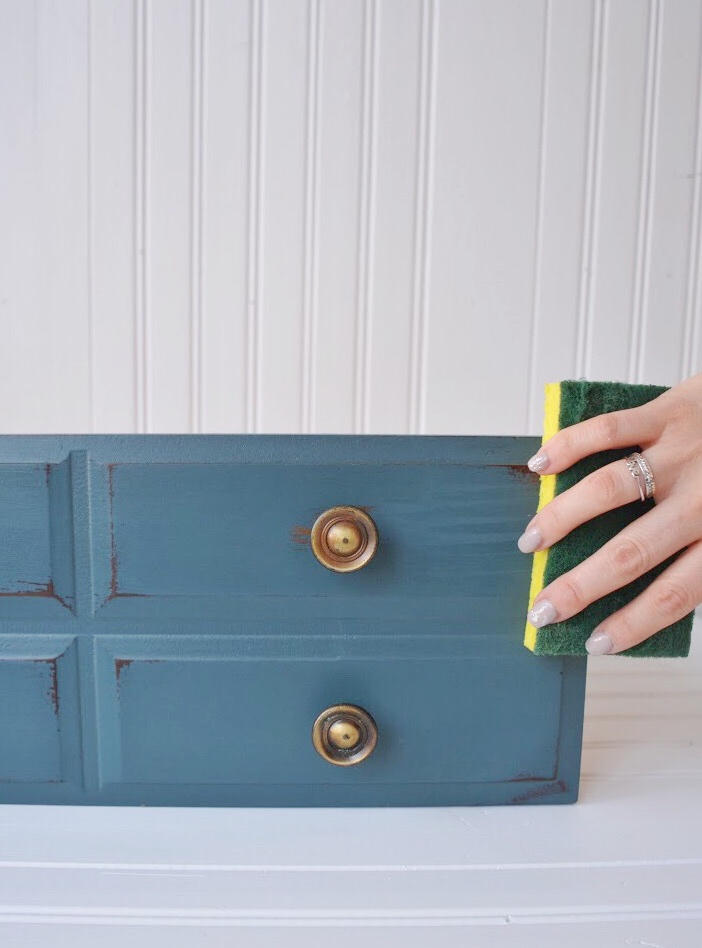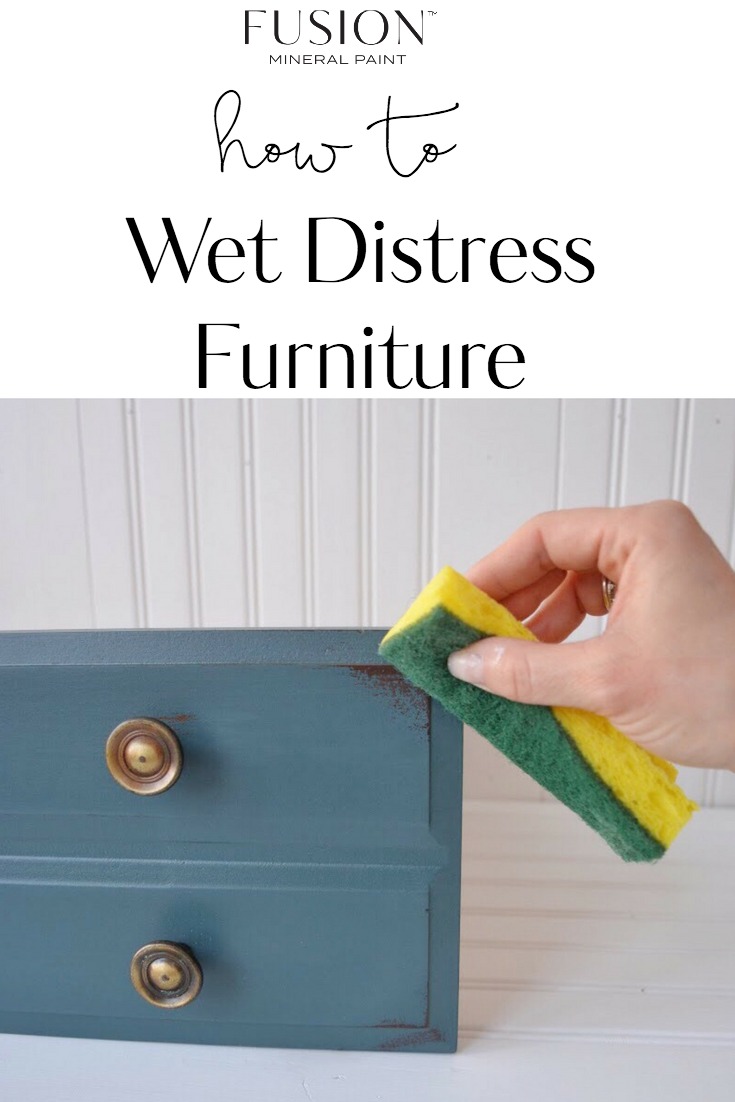A lot of people have been asking us, “How do you wet distress?”. We wanted to share our tips for how to wet distress furniture today on the blog.
Let’s start off with WHAT exactly wet distressing is. Wet distressing is a technique where you remove paint through physical abrasion using a wet medium. For example, a sanding sponge that is damp, or a cloth that is damp.

Here are my 3 Top Reasons to Wet Distress Furniture:
- It is Less Mess: You are not getting dust into the air or onto the floor as it all stays contained on your wet distressing pad or cloth.
- It is Controlled: You can see the results of your distressing immediately as the water cleans away the paint so you can easily see how much you are distressing at once. Sometimes when you are distressing with sandpaper you overdo it as you’re not able to see the true look as the dust gets in the way.
- It is Natural Looking and Easy! It provides a beautiful natural look, a naturally worn, gently used over time type look. It’s a great way to easily distress and get a natural look without the mess.
DIRECTIONS FOR HOW TO WET DISTRESS
Before starting, you must be sure your paint is dry. You should wait at least 30 minutes after you paint your piece of furniture to allow the paint to dry. Next, use a slightly dampened sanding sponge, and lightly begin to sand your piece. If you painted an item that was either bare or had very porous wood, this technique will help the piece to turn out very natural looking.

A warning. One thing to be cautious of is if you have applied several coats of paint over a surface that was glossy, be very gentle as you sand as the paint is still curing. Too much water and too much pressure will easily remove the paint within those 30 minutes (and up to 2 hours after painting).
Here are some easy tips to follow when wet distressing furniture
- Don’t apply much pressure as the paint is sensitive.
- Don’t use too much water. Just a slightly damp sponge will be enough.
- You can use the back of a dishwashing sponge (the green rough part) if you do not have a sanding sponge.
- After the item is distressed, sometimes there is a bit of discoloration. In which case you can add some oil or wax if you notice this occurring. This doesn’t happen all the time but sometimes it can, so this is just a precaution.
- Once the paint cures (after approximately 21 days), it will be waterproof and very difficult to wet distress. So plan ahead if this is something you are interested in doing.
We hope this helps you to try your hand at wet distressing. If you have any further questions, a great resource is our Paint it Beautiful Facebook group. There you will find like-minded paint enthusiasts who are always there to help each other with individual projects and answer questions about painting techniques, Homestead House products and so forth.

Join us by visiting the following link: Paint it Beautiful.




8 Responses